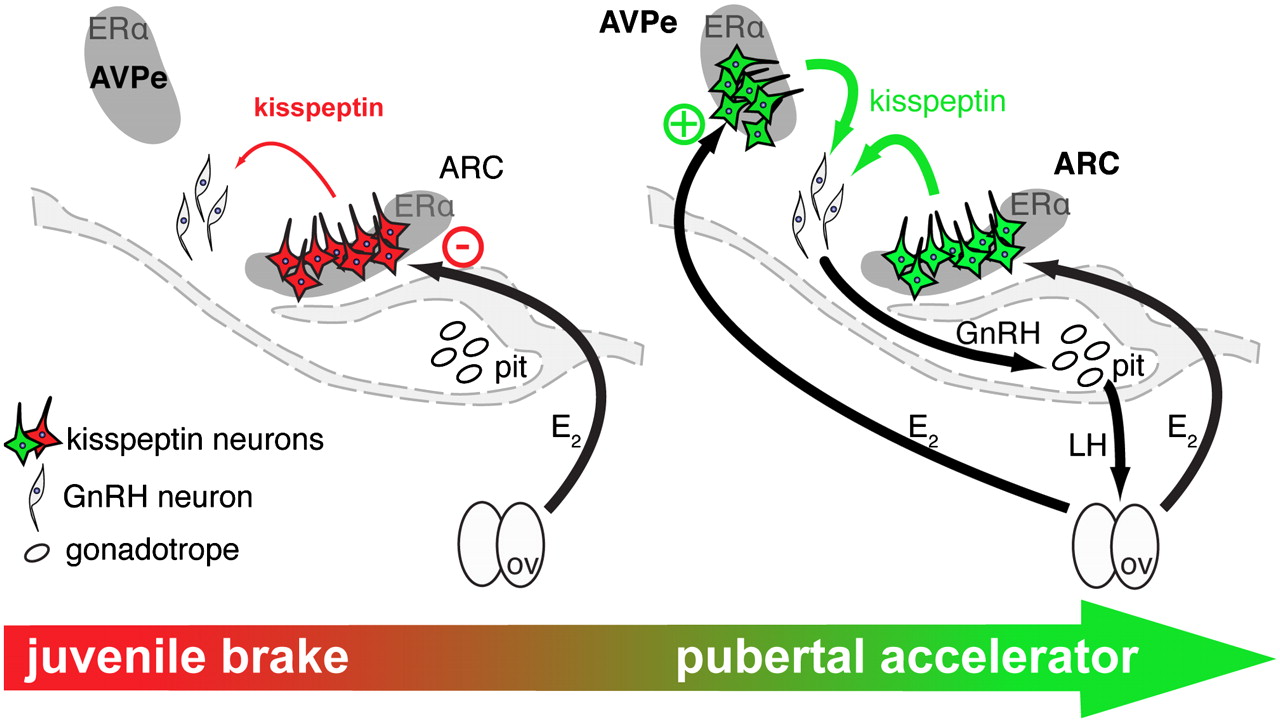Biology of Reproduction, lecture on Reproductive Cycling
XVI. Reproductive Cycling
A. during Puberty the neuroendocrine regulatory mechanisms
necessary for female cyclicity develop
B. Periodic fertility
1. pattern and rough timing regulated by biological rhythms
a. suprachiasmatic nucleus (hypothalamus) generates
circadian (about a day) pattern in mammals
b. in many species female and male reproductive
activity is circannual
i. ovarian and testicular size and activity are
reduced (quiescent) most of the year
(1) reduces energy expended maintaining ovaries
(a) vitellogenin for yolk is energy rich
c. other important rhythms for reproduction include:
circalunar, circatidal, ultradian (= pulsatile for hormones)
2. pattern and rough timing are also regulated
by reproductive physiology
a. negative and positive feedback
b. copulation, pregnancy & lactation
3. environmental stimuli, from seasonal variations,
adjusts timing
a. zeitgeibers entrain rhythms
b. light - especially in birds, mammals and reptiles
i. direct optic innervation of SCN
(retino-hypothalamic tract = Glu)
(1) SCN is a part of the hypothalamic region (APS)
which stimulates GnRH and LH surges
(2) SCN also projects to the pineal
ii. some reptiles have a 3rd eye (= parietal eye) with
direct innervation of the pineal gland
iii. pineal secretes melatonin
during scotophase (darkness )
(1) helps coordinate rhythms
(2) usually inhibits reproduction
(a) scotophase is longest
during non-reproductive seasons
(b) melatonin may stimulate reproduction
for short-day breeders
c. temperature
i. poikilotherms often require warmer temperatures
for gonadal recrudescence (growth and activation)
d. food/water/shelter
e. tides
i. many fishes and invertebrates have reproduction
tied to the tides
(1) they may also have
circannual reproductive rhythms
f. social environment
i. protandrous sequential hermaphrodites may depend
on group zoography to become female
C. Reproductive cyclicity is the neural integration of
biological clock, reproductive physiology
1. rhythms may be set in utero
a. affected by hormonal rhythmicity
2. rhythms set hormonal patterns
3. hormones (as neuromodulators) modify rhythms via feedback
4. environmental cues influence rhythms and hormone secretion
a. neurally mediated
5. hypothalamus, limbic system, & senses
are all reciprocally innervated
D. Seasonal cycles coordinates male and female effort
at times which fitness
